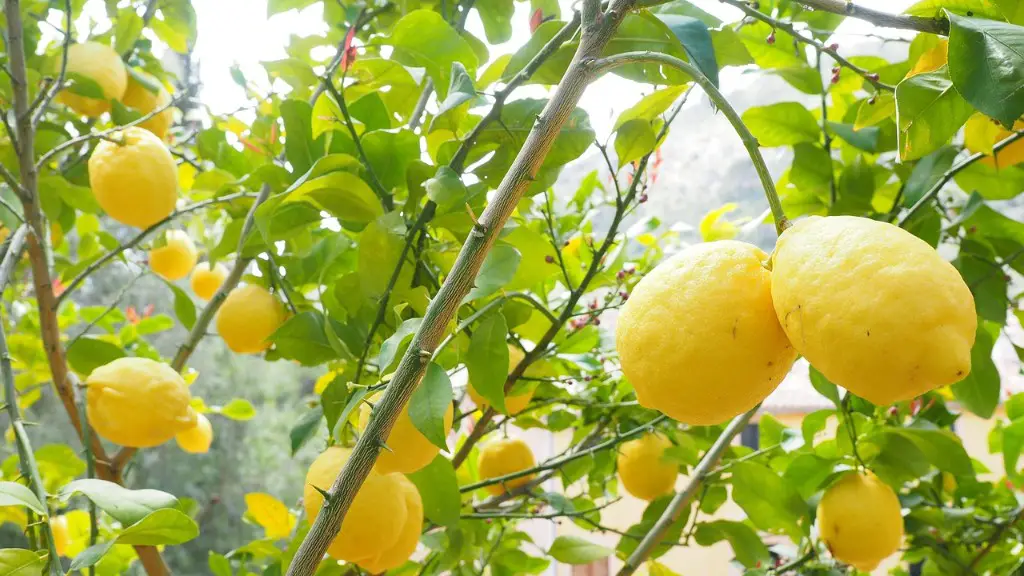How to Protect a Palm Tree from Frost
Palm trees are generally considered to be a tropical-looking addition to any landscape. They prefer warm temperatures, and when exposed to cold weather, frost and snow, can suffer from yellowing leaves, dieback and even death. Consequently, protecting a palm tree from frost is an essential part of maintaining its health and beauty. Here is an overview of strategies to prevent frost damage to a palm tree.
Choose the Appropriate Variety of Palm
As with any other type of tree, the frost hardiness of a palm tree depends largely on its variety. Cold-resistant palm tree varieties, such as Mexican fan palms, queen palms and sago palms, are much better able to withstand cold temperatures and frost than other, more tropical varieties. Choosing a suitable variety of palm tree is the first – and, in some respects, the easiest – step in protecting a palm tree from frost.
Keep the Tree Hydrated
Palm fronds, which are the tree’s main food-producing organs, contain mostly water. When proper hydration is missing, fronds slow down the uptake of nutrients, thereby making the tree more vulnerable to cold weather. Watering the tree sufficiently in advance of a frost also helps it to better resist damage from freezing temperatures. In order to keep the palm in top condition, water it steadily in the days leading up to a cold snap.
Shelter the Tree
Sheltering a palm tree from frost is one of the most effective strategies. If possible, the tree should be moved indoors or its location changed. If this is not possible, the tree can be covered with a tarp or plastic sheeting and tied securely in order to protect it from the cold. To ensure that the tree has adequate air circulation and avoid trapping moisture, cut slits or gaps in the covering material. If a tarp is used, secure it to the ground using stakes.
Protect the Trunk
When it comes to preventing frost damage, protecting the tree’s trunk is just as important as protecting the fronds. If left unprotected, frost can damage the bark of the tree and severely weaken its growth. Wrapping the trunk in burlap or bubble wrap is a good way to provide some additional insulation and safeguard the tree from cold temperatures.
Choose a Location Close to Buildings or Trees
When possible, select a location for your palm tree near buildings or trees. They will provide protection from frost and help to keep the ground temperature slightly higher. It is also important to avoid windswept areas, as this can accelerate the cooling effects of frost.
Prune the Tree Regularly
Pruning is an effective method for protecting a palm tree from frost damage. Pruning – which involves trimming dead or damaged fronds – reduces the tree’s overall area of exposure to cold weather. It also helps to keep the tree’s vital nutrients and moisture levels consistent. As a result, it is essential to prune the tree regularly in order to keep it healthy and resistant to frost damage.
Cover the Tree During a Frost Event
Finally, when an unexpected frost event occurs, it is important to take steps to protect the palm tree’s fronds as quickly as possible. If there is time, cover the tree with a tarp or plastic sheeting. If not, saturate the tree’s fronds with water to provide some insulation and reduce the effects of the cold.
Fertilize the Tree During the Growing Season
Fertilizing a palm tree during the growing season is an important step in keeping the tree healthy and cold-resistant. A balanced fertilizer such as a 10-10-10 should be used to provide the necessary nutrients, vitamins and minerals. Fertilizing the tree on a regular basis helps to keep it in top condition and helps it to resist frost damage.
Shelter the Root System
In addition to protecting the trunk and fronds, the root system of the palm tree should also be sheltered from frost and snow. Mulching helps to insulate the roots from cold weather and to retain moisture. Organic mulch, such as wood chips, bark, leaves and straw, is an ideal option as it breaks down slowly, releasing nutrients into the soil. If possible, mulch should be applied in a circle around the trunk, extending out several feet.
Protect Vulnerable Areas of the Tree
Although a palm tree’s fronds and trunk are the most vulnerable parts of it during a frost event, its roots and growing points are equally susceptible to damage. The growing points of a palm are where new growth is generated and are the site of the tree’s most vital nutrients. Covering the growing points with a burlap or canvas sack, while making sure to keep them well ventilated, helps to provide much needed insulation.
Apply Anti-Frost Spray
If you are unable to take any of the protective measures listed above, applying an anti-frost spray can help to reduce the effects of cold weather on a palm tree. Anti-frost sprays are made from waxes and can help to form a barrier against the cold. Apply the spray to the fronds, trunk and roots and make sure that the tree is well-drained to prevent moisture from building up.
Insulate Outside Walls
When a palm tree is planted against an outside wall, increased cold weather may be transmitted to the tree through the wall. Insulating the wall with foam board or other insulation materials will help to keep the wall temperature higher and, in turn, reduce the risk of frost damage to the palm tree.
Surround the Tree with a Protective Layer of Sand
Spreading a layer of sand around the base of the palm tree helps to keep the ground temperature slightly higher, thereby helping the tree resist frost damage. The sand should be at least three inches thick and should be applied several weeks before any expected frost events. It is also important to keep the sand evenly distributed around the base of the tree.
Monitor the Weather
Finally, on days when the temperature is expected to drop below freezing, the tree should be monitored for signs of frost damage. Early signs of frost damage include yellowing fronds and dieback, and if any of these symptoms are spotted, prompt action should be taken to reduce the effects of the cold weather. This may involve covering the tree with a tarp, mulching the area or applying an anti-frost spray.



